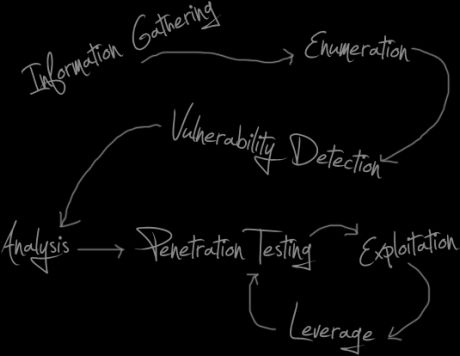What is an External Network Penetration Test?
External network penetration testing focuses on identifying and exploiting vulnerabilities in an organization's internet-facing assets, such as web servers, firewalls, routers, and other devices accessible from the Internet. This testing simulates an attack from an external threat actor attempting to breach the network's perimeter defenses. The goal is to assess the effectiveness of the security controls in place and to identify potential weaknesses that could be exploited from outside the organization's network. Penetration testers will typically begin with reconnaissance activities, such as information gathering and network scanning, to identify potential targets. They will then attempt to exploit identified vulnerabilities to gain unauthorized access or to demonstrate the potential impact of successful attacks.
Effective external network penetration testing requires a thorough understanding of both offensive and defensive security techniques. Testers use a variety of tools and techniques to scan for open ports, identify running services, and detect vulnerabilities in software and hardware. Common vulnerabilities that may be identified include misconfigurations, unpatched software, weak passwords, and exposed sensitive data. The results of the testing are compiled into a detailed report, which includes recommendations for mitigating identified risks. The ultimate objective is to help organizations strengthen their external defenses and reduce the likelihood of successful external attacks.
Frameworks and Standards
NIST SP 800-115: A technical guide to information security testing and assessment.
PTES: Provides a lifecycle for penetration testing engagements.
Common Tools we utilize to assess your External Network:
Nmap: Used for network discovery and enumeration.
Metasploit Framework: An exploitation framework used to test vulnerabilities.
Nessus: A vulnerability scanner to identify known security issues.
Let Rarefied help assess your external network today!
How a Security Test is Performed

Our penetration testing methodology is based on a variety of security standards including, but not limited to, NIST, OWASP, and industry best practices. We put each target through this process to ensure a quality test every time and to meet our service commitments. Our test results can be used to support compliance standards (PCI, HIPAA, etc.) or best practices.
01
Information Gathering & Enumeration
This is the most crucial stage of the assessment. In this phase, we learn everything we can about your environment by assessing technologies used, possible attack points, open ports, and anything else publicly discoverable. What we find here serves as the baseline for all future tests.
02
Vulnerability Detection
We use a hybrid approach of manual testing techniques and automated scanning tools to look for possible vulnerabilities in your environment.
03
Analysis
Now it's time to develop a plan. Based on what we have learned up to this point, we decide which attack vectors to further pursue, and start testing.
04
Vulnerability Exploitation & Leverage
This is where the real fun begins. A successful attack is almost always the result of chaining vulnerabilities together until the target is fully compromised. This is typically a circular process, in which vulnerabilities are tested for, exploited, and then leveraged to test for more issues. The process repeats itself until the goal is achieved.
We deliver a formal report detailing our findings
We'll test your web applications, network hosts, APIs, and mobile applications for security issues. We'll then discuss the issues with your team and provide a report detailing our findings. This report can be used in support of compliance (PCI, HIPAA, etc.) or best practices.
What comes next?
Once we have completed our testing, we'll work closely with your team to make sure they understand the issues we have uncovered. Our goal is to ensure that our rigorous security testing provides you and your team with peace of mind that you are implementing secure coding techniques correctly and following security best practices effectively.
Ready to get started?
We look forward to discussing your security testing needs.